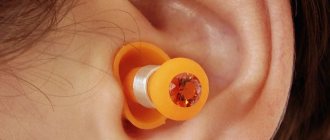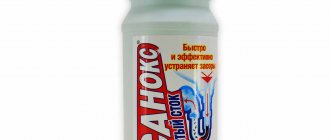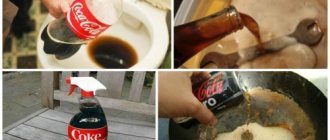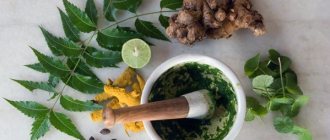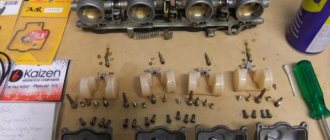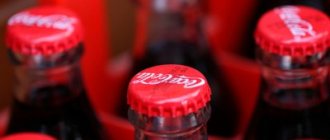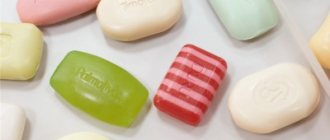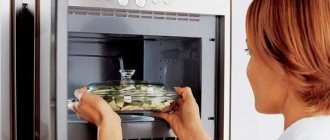Hello, dear readers of my life blog!
As he said in the announcement: “ Live forever, learn forever!”
" So I learned this folk wisdom myself.
I recently encountered the following problem: the locking nuts on the wheels of my car (KIA RIO X-Line) began to rust. And it seems like a trifle, but the car is new, and so are the wheels. And besides, the wheels are black and polished. Therefore, rusty nuts spoiled the whole look. So I asked myself: “How to clean rusty nuts from rust without much effort?”
And it turned out that my problem, if it is not running, has a completely acceptable and budget-friendly solution - the most ordinary Coca-Cola.
Therefore, in this article I will share my life hack on how I used regular Coca-Cola to remove rust from the chrome nuts on the wheels of my car.
How to clean a cola kettle and much more
If a layer of scale has formed inside the kettle , in order to get rid of it, just fill it with cola halfway and bring it to a boil. After this, wait a few minutes and pour out the soda. After this, the softened layer of scale will easily move away from the walls of the kettle.
To remove brown tea stains from cups , fill them with soda and leave to stand for several hours. The walls of the cup will lighten, and not a trace will remain of the plaque.
In order to clean the toilet with cola or another drink, you need to pour a bottle of “cleaning agent” into it (preferably so that it gets under the rim) and leave without flushing for at least an hour. Or better yet, at night. Then clean it with a brush - and you will see that the yellow deposits have disappeared, and the plumbing fixtures shine with pristine whiteness.
To clean limescale and rust from bathroom and kitchen taps or other chrome parts, you can wrap them with a cloth generously soaked in a magic drink, and after 10-15 minutes, wash and wipe until shiny.
clean a coin with cola : just put it in a drink overnight and wipe it with a soft cloth in the morning: the layer of dirt will be removed and the coin will become lighter. You can use the same method to remove rust from small objects.
To remove stains from clothes , you need to pour cola on the stains (or simply moisten a pile of clothes with it directly in the drum of the washing machine), and after a few minutes add regular laundry detergent and wash as usual. And the stains are washed off much better.
Corrosion formation
Metal corrosion , or simply rust, appears as a result of metal oxidation under the influence of the environment. The main reason for its appearance is damage to the paint on the car body.
All resulting scratches and chips sooner or later become a source of rust formation, which gradually spreads deeper into the stain and over the entire larger surface area of the body.
The rate at which corrosion spreads depends on the aggressiveness of the environment and the condition of the body itself. For example, in the winter season it spreads many times faster.
It is much easier to deal with a single rust stain that has just appeared than with multiple “saffron caps” or an old stain where the metal is corroded almost completely.
The appearance of corrosion that is not yet visible to the eye is indicated by swelling of the paintwork. Such areas should be immediately cleared of old paint and cleaned.
Types of body corrosion
Among the most common types of body corrosion are:
- Chemical. The main catalyst is the surrounding part. The metal product gradually begins to oxidize. The biggest danger is contact with moisture. After all, it may contain various substances and additives. Even air is chemically dangerous for metal, especially in places with a very poor environment.
- Mechanical. Caused by the impact of significant mechanical load on the body. This process especially often manifests itself along with electrochemical corrosion, in places of mutual contact and connection of materials.
- Electrochemical. The likelihood of such body corrosion developing is especially high during the cold season. This is due to the fact that there is a lot of salt, sand and other reagents on the road. In contact with steel, they create a cathode-anode connection. As a result, the metal surface quickly deteriorates.
Vulnerable places
The areas that experience the greatest mechanical stress are the most susceptible to corrosion. These include:
- thresholds are among the first to suffer from corrosion;
- hood – small pebbles from the vehicle in front provoke the appearance of numerous chips;
- wheel arches are constantly exposed to aggressive chemicals.
It is important to promptly detect emerging rust and eliminate it, preventing the further spread of corrosion. To do this, you need to know how you can deal with this unpleasant phenomenon yourself.
Why cola cleans scale, rust and limescale
In fact, the cleaning properties are not a specific feature of Coca-Cola, Pepsi or Sprite and do not indicate that these drinks contain any particularly harmful or particularly powerful chemicals. Any lemonade has cleaning properties, and the effect of all these products is approximately the same. And cola is simply the most advertised - and, accordingly, more widespread and more mythologized.
Almost all carbonated drinks contain acidity regulators - as a rule, this is citric acid (E-330), which is widely used in everyday life.
Another popular acidity regulator is orthophosphoric acid (E338), well known to motorists as an excellent anti-corrosion agent: it not only transforms rust, but also prevents further corrosion of the metal, forming a thin protective film on its surface.
Don’t forget about the “magic bubbles” of carbon dioxide, which also react chemically with water, ultimately forming carbonic acid.
Thus, any carbonated soft drink, from a chemical point of view, is a weak acidic solution. And when the drink is poured into a teapot covered with a gray crust, it is the acids that react and dissolve the lime. This is what explains the “magical” cleaning properties of cola and other carbonated drinks.
Rating of liquid products
Among the anti-corrosion liquids for the car body, the following are perfect.
FENOM FN956
This is one of the best liquid corrosion converters. Its effectiveness has been proven by many tests - the FENOM FN956 composition easily transforms rust up to 100 microns thick. After drying, the metal surface is covered with a durable crust based on manganese and iron compounds.
Advantages:
- Rust protection for up to seven years.
- Can be easily used for preserving metal without painting.
Minuses:
- Insignificant volume.
- Great cost.
YasKhim
YasChem is a universal and affordable drug. Essentially, it is phosphoric acid diluted with water and additional components. The drug retains its qualities even after defrosting.
Advantages:
- High efficiency.
- Affordable price.
Minuses:
- There is no effect of tinning, galvanizing or other protection.
Chemist
This product easily removes corrosion and protects the body metal from future relapses. After applying the drug Khimik, a zinc coating appears on the surface and a layer of primer is formed. The latter helps to significantly improve the adhesion of the treated metal to paint and varnish.
Advantages:
- It acts quickly and does not require rinsing.
- Prevents relapse.
- Easily removes rust.
- Reliably protects the surface from corrosion.
Minuses:
- Corrodes paint.
- Toxic.
Soda as a cleaning agent: expensive and not very effective
Despite the fact that cola does indeed successfully function as a cleaning agent, it is not very wise to use it as a household chemical.
The authors of the “MythBusters” program on the Discovery Channel at one time specifically conducted experiments, testing the effectiveness of Coca-Cola in cleaning, and came to the conclusion that the drink does indeed have cleaning properties, but its effectiveness is still significantly lower than from specialized means. And this is understandable: after all, the content of the drink is extremely small. By the way, it is no coincidence that all “folk methods” of using cola involve very long contact with the drink - the chemical effect takes time.
The cost of a bottle of soda is comparable to the cost of a bottle of specialized household chemicals, which will last for a long time. At the same time, drinks, in addition to cleaning additives, also contain a lot of ingredients that are unnecessary for a cleaning product - such as sweeteners or food coloring.
And fans of home remedies can use solutions of food acids - for example, acetic or citric - instead of soda. Or wipe the stains with half a lemon - the concentration of citric acid in lemon juice is much higher, so the cleaning effect will be much more noticeable. It is both more environmentally friendly and much cheaper.
Corrosion Removal Methods
Corrosion can be eliminated in the following ways:
- Mechanical – used for severe corrosion, it involves removing rust by stripping down to metal, followed by priming, puttying and painting the area of the body being repaired;
Advantages of the method: elimination of large and deep stains, damage under swelling paint, as well as low cost and availability of the necessary materials.
Disadvantages: length of the process.
- Chemical - involves using rust removers. Such reagents are widely represented on the modern market.
Advantages of the method: elimination of corrosion in hard-to-reach places, higher process speed.
Disadvantages: inability to use on heavily damaged areas.
Let's consider the process of eliminating corrosion using each of the methods presented above in more detail.
Corrosion protection
Follow the simple tips below to protect your car from corrosion:
- wash your car regularly;
- install mudguards (if you don’t have them);
- treat the car with polishing agents (such as “liquid glass”);
- carry out anti-corrosion treatment on the underbody of the car.
Regularly inspect your clean car for problem areas. Remove any small stains that appear in a timely manner. Remember: severe advanced corrosion will lead to expensive body repairs.
Take good care of your car, and then the methods described above will not be useful to you!
How to remove rust from metal - mechanical treatment
Cleaning with abrasives is the first thing that comes to mind if you start thinking about how to remove rust from metal. If metal utensils can be cleaned with a brush and soda, then to combat deeper corrosion processes, professional tools are used: grinders with attachments, files, sandpaper of varying hardness.
But if it is necessary to remove rust from large metal products and assemblies, special sandblasting machines are used.
A mixture of water and sand is applied to the area under pressure; this abrasive attack removes rust most effectively
